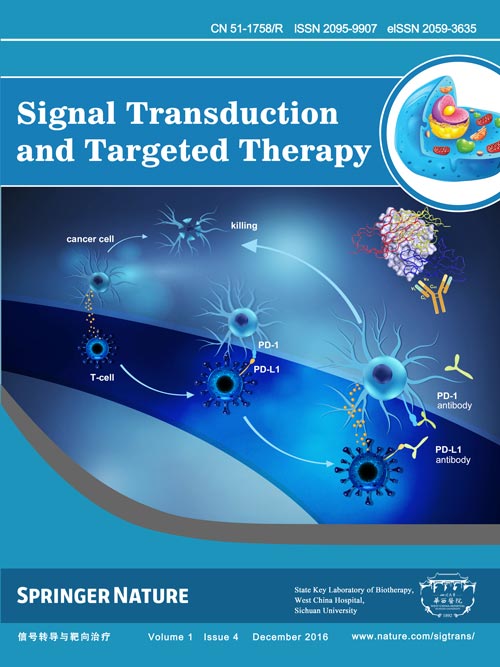Volume 1 Issue 4, Dec 2016:
Article
Tumor cell-intrinsic PD-L1 promotes tumor-initiating cell generation and functions in melanoma and ovarian cancer
Harshita B Gupta,Curtis A Clark,Bin Yuan,Gangadhara Sareddy,Srilakshmi Pandeswara,Alvaro S Padron,Vincent Hurez,José Conejo-Garcia,Ratna Vadlamudi,Rong Li &…Tyler J Curiel
As tumor PD-L1 provides signals to anti-tumor PD-1+ T cells that blunt their functions, αPD-1 and αPD-L1 antibodies have been developed as anti-cancer immunotherapies based on interrupting this signaling axis. However, tumor cell-intrinsic PD-L1 signals also regulate immune-independent tumor cell proliferation and mTOR signals, among other important effects. Tumor-initiating cells (TICs) generate carcinomas, resist treatments and promote relapse. We show here that in murine B16 melanoma and ID8agg ovarian carcinoma cells, TICs express more PD-L1 versus non-TICs. Silencing PD-L1 in B16 and ID8agg cells by shRNA (‘PD-L1lo’) reduced TIC numbers, the canonical TIC genes nanog and pou5f1 (oct4), and functions as assessed by tumorosphere development, immune-dependent and immune-independent tumorigenesis, and serial transplantability in vivo. Strikingly, tumor PD-L1 sensitized TIC to interferon-γ and rapamycin in vitro. Cell-intrinsic PD-L1 similarly drove functional TIC generation, canonical TIC gene expression and sensitivity to interferon-γ and rapamycin in human ES2 ovarian cancer cells. Thus, tumor-intrinsic PD-L1 signals promote TIC generation and virulence, possibly by promoting canonical TIC gene expression, suggesting that PD-L1 has novel signaling effects on cancer pathogenesis and treatment responses.
